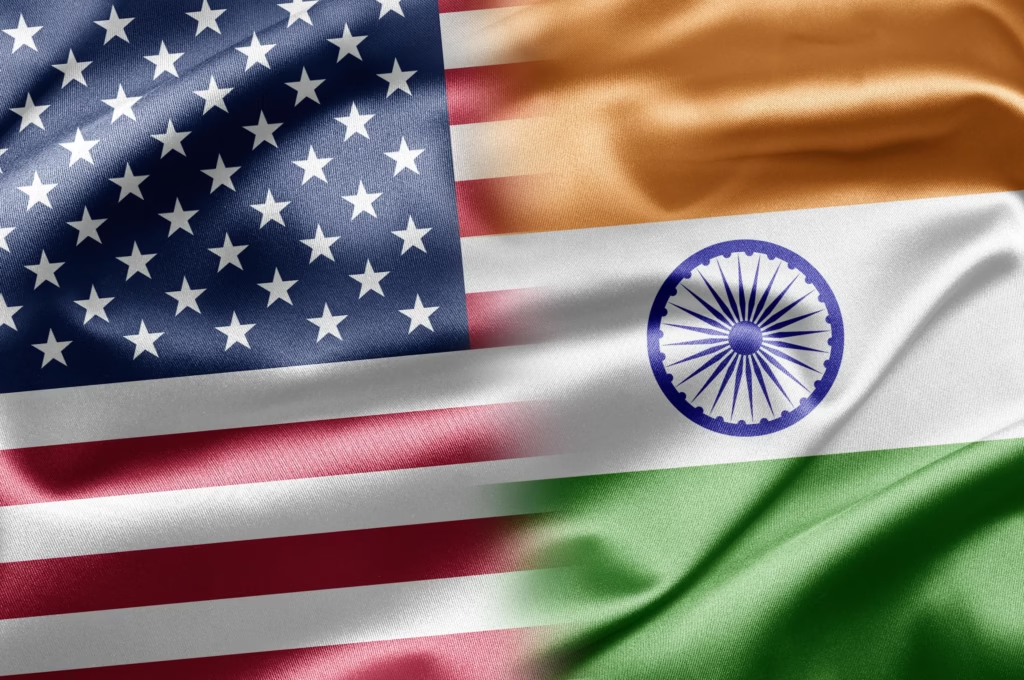India has historically implemented economic reforms in response to crises. The country’s most significant liberalisation came in 1991 when a severe financial crisis forced the government to open up the economy. Now, amid US President Donald Trump’s ongoing tariff war and increasing trade tensions worldwide, India faces a pivotal moment. Could this be an opportunity for the world’s fifth-largest economy to move away from protectionism and integrate further into global trade? Or will it lead to further restrictions that limit India’s competitiveness?
India’s Trade Landscape and the Impact of High Tariffs
India is frequently referred to as the “tariff king” due to its high import duties. The country’s trade-weighted import tariff stands at 12%, significantly higher than the United States (2.2%), China (3%), and Japan (1.7%), according to World Trade Organization (WTO) data. These tariffs increase costs for businesses dependent on global supply chains and make imported goods more expensive for Indian consumers.
Despite strong service exports, India’s share of global trade remains at just 1.5%, and it continues to run a significant trade deficit. High tariffs have led to:
- Increased production costs for manufacturers reliant on imported raw materials.
- Limited access to foreign goods and technology.
- Reduced competitiveness in global markets.
- Higher prices for consumers on imported products.
The question now is whether Trump’s tariff policies will push India towards greater economic openness or reinforce its protectionist approach.
India’s Response to Trump’s Trade Policies
India has taken steps to de-escalate tensions with the US. In early 2025, ahead of a key meeting between Prime Minister Narendra Modi and President Trump, India unilaterally reduced tariffs on select American products, including Bourbon whiskey, motorcycles, and certain agricultural goods. Commerce Minister Piyush Goyal also made multiple trips to the US to discuss a potential trade deal, demonstrating India’s willingness to negotiate.
Trade analysts estimate that retaliatory tariffs from the US could cost India up to $7 billion annually, affecting key industries such as metals, chemicals, jewellery, pharmaceuticals, automobiles, and food products. In response, the Indian government has begun encouraging exporters to become more competitive and reduce reliance on protectionist policies.
Additionally, India is actively pursuing free trade agreements (FTAs) with several major economies, including:
- The United Kingdom
- The European Union
- New Zealand
These efforts indicate a potential shift towards a more open trade policy.
Reforming India’s Trade Policies: Opportunities and Challenges
India’s rapid economic growth between the late 1990s and early 2000s was largely driven by its gradual integration into global trade. Industries such as pharmaceuticals, software, automobiles, textiles, and garments benefited significantly from trade liberalisation. However, in recent years, India has leaned towards protectionist measures, limiting its ability to attract foreign investment and increase exports.
Key challenges that India must address include:
- Manufacturing inefficiencies: High tariffs discourage efficiency, leading to inflated production costs.
- Limited global market share: India’s global export presence is small compared to its economic size.
- Job creation needs: The country needs more employment in manufacturing to absorb its growing workforce.
- Supply chain integration: India’s participation in global value chains remains relatively low.
A shift towards lower tariffs and improved trade policies could make India a more attractive destination for investors and increase its share in global trade.
Industry-Specific Impacts and Strategic Moves
Several key sectors are closely watching India’s response to the global trade environment:
1. Telecom and Technology
India’s homegrown telecom giants, Reliance Jio and Bharti Airtel, have partnered with SpaceX’s Starlink, led by Elon Musk, to launch satellite internet services in India. This collaboration signifies India’s willingness to engage with global tech leaders despite trade tensions.
2. Pharmaceuticals and Healthcare
India’s pharmaceutical sector has benefited from international trade liberalisation, but protectionist policies have limited its access to global supply chains. Lower tariffs could enhance the sector’s ability to export and compete globally.
3. Automotive Industry
The automobile sector has faced fluctuating tariffs that impact both imports and exports. Strategic tariff reductions could encourage foreign investment and boost domestic manufacturing.
4. Textiles and Labour-Intensive Industries
India’s Make in India initiative prioritised capital- and technology-intensive sectors but did not adequately support labour-intensive industries such as textiles. Reducing trade barriers in these sectors could significantly improve employment rates and export potential.

The Risk of Overdependence on the US Market
While improving trade relations with the US is critical, some analysts warn against overcompensating in negotiations. India’s preemptive tariff reductions on US goods—before the imposition of country-specific US tariffs—have raised concerns about India’s bargaining power in trade talks.
Ajay Srivastava, founder of the Global Trade Research Initiative (GTRI), argues that India must adopt a more strategic approach rather than making concessions based on rhetoric. If India continues making unilateral trade compromises, it may face difficulties securing favourable terms in future trade agreements.
A Unique Opportunity for Trade Reform
Experts believe India can leverage the current global trade disruptions to reshape its economic policies and strengthen its role in global markets.
Trade expert Aseema Sinha from Claremont McKenna College highlights that by lowering tariffs and reducing protectionist barriers, India could:
- Increase its influence in South Asia and Southeast Asia.
- Strengthen trade relationships with the Middle East.
- Attract foreign investment and become a hub for global manufacturing.
This could help India create millions of new jobs, particularly in manufacturing, which is essential given that 40% of the workforce remains employed in agriculture, a sector with low productivity levels.
Balancing Trade Liberalisation with Domestic Industry Protection
A key concern in reducing tariffs is the risk of foreign dumping, where countries flood the market with cheap goods, potentially harming domestic industries.
Economist Rajeshwari Sengupta from the Indira Gandhi Institute of Development Research suggests that India could implement selective non-tariff barriers, particularly against China, while still reducing tariffs broadly. This approach would help protect domestic industries without limiting India’s access to global trade.
What Lies Ahead for India’s Economic Strategy?
The US-China trade war and shifting global supply chains could present India with a once-in-a-generation opportunity to expand its role in the global economy. If Trump’s tariff war forces companies to look beyond China, India could position itself as a new manufacturing hub.
However, achieving this requires:
- Lowering import tariffs to attract foreign investment.
- Expanding manufacturing capacity to provide employment opportunities.
- Enhancing trade agreements to integrate with global supply chains.
- Balancing protectionist policies with global competitiveness.
Without meaningful reforms, India risks being left behind as other economies adapt to new trade realities. The decisions made in the coming months could define the country’s economic trajectory for the next decade.











